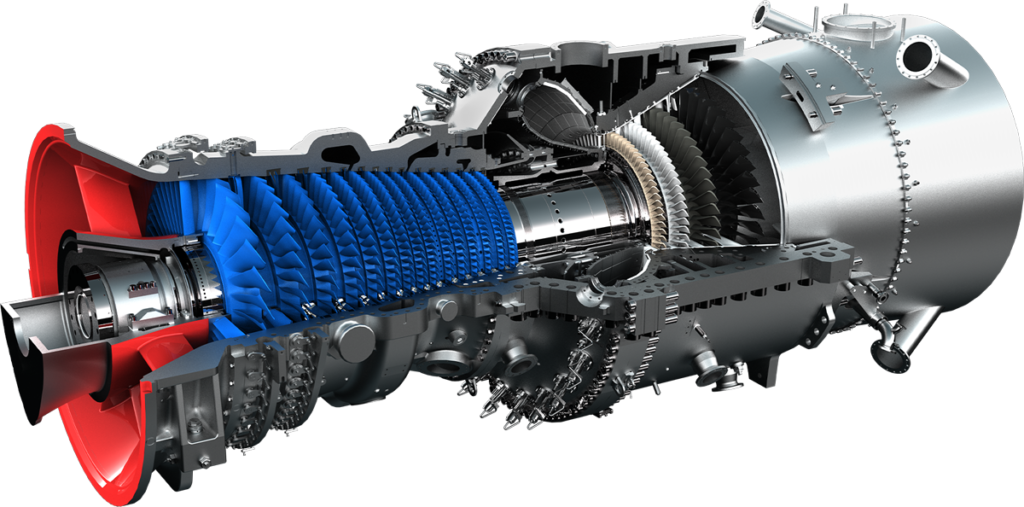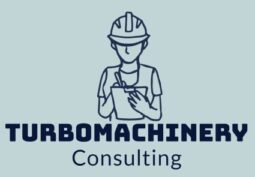DAMAGEABILITY IN GAS TURBINE BLADES

LIMITS IN ENGINEERING & DESIGN FOR DAMAGEABILITY IN GAS TURBINE BLADES
Material Selection and Properties: Gas turbine blades require materials with high strength, temperature resistance, and resistance to corrosion and fatigue. However, limitations exist in finding materials that can withstand the extreme operating conditions while maintaining their mechanical properties over an extended period. Research and development efforts are essential to identify and develop materials with improved properties.
Environmental Factors: Gas turbine blades are exposed to harsh operating environments, including high temperatures, corrosive gases, and particulate matter. These factors can contribute to accelerated material degradation, including corrosion, erosion, and oxidation. Engineering designs should consider these environmental factors and incorporate protective coatings, materials, and cooling mechanisms to mitigate damage.
Thermal Gradients and Thermal Stress: Gas turbine blades experience significant thermal gradients, with the leading edges subjected to higher temperatures than the trailing edges. This non-uniform thermal distribution can lead to thermal stress and potential damage, such as thermal fatigue and creep. Design optimization, including cooling mechanisms and material selection, should be employed to minimize thermal stress and promote uniform temperature distribution.
Vibration and Mechanical Loading: Gas turbine blades are subjected to cyclic loading and vibrations, which can lead to fatigue cracks and mechanical failures. Design considerations should focus on minimizing stress concentrations, optimizing blade profiles, and ensuring proper damping to reduce the impact of vibrations and mechanical loading.
Manufacturing Defects: Manufacturing processes can introduce defects in gas turbine blades, such as voids, inclusions, and surface roughness. These defects can act as stress concentration points and contribute to premature failures. Quality control measures, stringent manufacturing standards, and non-destructive testing techniques should be employed to detect and mitigate manufacturing defects.
Residual Stress: Residual stress resulting from manufacturing processes, including casting, forging, or welding, can affect the structural integrity of gas turbine blades. Excessive residual stress can contribute to crack initiation and propagation. Careful process control, post-processing techniques, and stress relief treatments can help minimize residual stress and improve blade durability.
Operational and Maintenance Factors: The operational and maintenance practices employed for gas turbines can impact blade damageability. Inadequate operational procedures, such as excessive starts/stops or rapid load changes, can accelerate fatigue and damage. Insufficient maintenance practices, including inadequate cooling system performance or insufficient inspections, can lead to undetected damage and potential failures. Robust operational and maintenance protocols should be implemented to prevent damage and ensure the longevity of gas turbine blades.
Research and Advanced Techniques: Continuous research and development efforts are necessary to address the limitations associated with damageability in gas turbine blades. Advanced techniques, such as advanced materials, coatings, non-destructive testing methods, and simulation tools, can aid in improving blade design, manufacturing processes, and damage detection.
By addressing these limitations through advanced engineering, material research, manufacturing improvements, quality control measures, operational optimization, and maintenance practices, it is possible to enhance the reliability, availability, safety factors, and mitigate environmental risks and failures in gas turbine blades applied in power generation, oil, and gas industries. Collaboration between gas turbine manufacturers, blade designers, research institutions, and industry experts is crucial to drive innovation and overcome these limitations.
WHY, WHEN, WHERE, WHAT, WHICH, HOW TO APPLY ENGINEERING & DESIGN FOR DAMAGEABILITY IN GAS TURBINE BLADES
Why Address Damageability: Damageability in gas turbine blades can lead to reduced performance, increased maintenance requirements, and potential failures. By addressing damageability, gas turbines’ reliability, availability, and safety factors can be improved, minimizing downtime and associated costs. Furthermore, addressing damageability helps mitigate environmental risks by preventing potential emissions or leaks resulting from blade failures.
When to Apply Engineering and Design Measures: Engineering and design measures to address damageability should be implemented during gas turbine blades’ design and manufacturing stages. Additionally, continuous monitoring, inspection, and maintenance practices should be established throughout the operational life of the gas turbine to detect and address any emerging damage or degradation.
Where to Apply Engineering and Design Measures: Engineering and design measures should be applied to all critical areas of gas turbine blades, including the leading and trailing edges, airfoil sections, cooling channels, and attachment points. These areas are particularly susceptible to damage, and addressing their design and performance is crucial to ensuring blade integrity.
What Engineering and Design Measures to Implement: Various engineering and design measures can be implemented to address damageability in gas turbine blades. These include:
a. Material Selection: Use high-performance materials with improved strength, temperature resistance, and corrosion resistance properties to enhance blade durability.
b. Coatings and Surface Treatments: Apply protective coatings or surface treatments to mitigate corrosion, oxidation, and erosion, improving blade lifespan and performance.
c. Cooling Systems: Implement effective cooling systems, such as internal and external cooling channels or film cooling techniques, to manage heat and reduce the risk of overheating and thermal damage.
d. Structural Design Optimization: Optimize the blade’s structural design, including airfoil profiles, thickness, and geometric features, to minimize stress concentrations and improve load distribution.
e. Vibration Damping: Incorporate vibration-damping mechanisms, such as tuned mass dampers or dampening coatings, to reduce the impact of mechanical vibrations on blade integrity.
f. Non-destructive Testing (NDT): Employ advanced NDT techniques, such as ultrasonic testing, X-ray inspection, or thermography, to detect potential defects, cracks, or damage in blades during manufacturing and maintenance.
Which Standards and Guidelines to Follow: Adhere to relevant industry standards, guidelines, and best practices, such as those provided by organizations like the American Society of Mechanical Engineers (ASME) or the International Electrotechnical Commission (IEC). These standards provide recommended practices and requirements for the design, materials, manufacturing, and inspection of gas turbine blades.
How to Implement Engineering and Design Measures: The implementation of engineering and design measures involves collaboration among gas turbine manufacturers, blade designers, material specialists, and research institutions. It requires a multidisciplinary approach, including computational modeling, simulation, prototyping, and testing. Continuous improvement and knowledge sharing through research and development efforts are crucial to advance the field and implement the most effective measures.
By addressing damageability through comprehensive engineering and design measures, gas turbine blades can be made more robust, reliable, and resistant to plastic deformations, corrosion, fatigue cracks, overheating, and other damaging factors. This, in turn, improves the overall reliability, availability, and safety factors of gas turbines, mitigates environmental risks, and reduces the likelihood of failures in power generation, oil, and gas industries.

PROCEDURES, ACTIONS, STUDIES, MITIGATION, RECOMMENDATIONS TO APPLY DAMAGEABILITY IN GAS TUURBINE BLADES
Material Selection and Studies:
- Conduct comprehensive material studies to identify and select high-performance materials with improved strength, temperature resistance, corrosion resistance, and fatigue properties.
- Evaluate material behavior under various operating conditions, including temperature gradients, cyclic loading, and corrosive environments.
- Conduct research and development to explore advanced materials, such as ceramic matrix composites (CMCs) or nickel-based superalloys, that offer enhanced damage resistance and durability.
Design Optimization and Analysis:
- Utilize advanced computational modeling and simulation techniques to optimize the structural design of gas turbine blades, including airfoil profiles, cooling systems, and attachment points.
- Perform stress analysis and structural integrity assessments to identify potential stress concentrations and design flaws that could contribute to plastic deformations, fatigue cracks, or failure initiation.
- Consider multi-objective optimization approaches to balance performance, durability, and weight reduction objectives.
Coatings and Surface Treatments:
- Apply protective coatings, such as thermal barrier coatings (TBCs) or environmental barrier coatings (EBCs), to enhance corrosion and oxidation resistance.
- Implement surface treatments, such as shot peening or laser shock peening, to induce compressive residual stresses and improve fatigue strength.
- Conduct research on advanced coating technologies to further enhance blade protection and resistance to damage mechanisms.
Cooling System Design:
- Optimize internal and external cooling systems to efficiently manage heat transfer and reduce the risk of overheating.
- Study and design effective cooling channel configurations, film cooling techniques, and convective cooling strategies to maintain blade temperature within safe limits.
- Consider advanced cooling techniques, such as impingement cooling or transpiration cooling, to enhance cooling efficiency and reduce thermal gradients.
Inspection, Monitoring, and Maintenance:
- Establish regular inspection and maintenance schedules to detect potential damage, including cracks, corrosion, or coating degradation, at an early stage.
- Utilize advanced non-destructive testing (NDT) techniques, such as phased array ultrasonics, eddy current testing, or thermography, to assess blade integrity without disrupting operation.
- Implement condition monitoring systems to continuously monitor blade performance, temperature, vibration, and detect any anomalies or potential failures.
Research and Collaboration:
- Promote collaborative research and development efforts among gas turbine manufacturers, blade designers, material scientists, and research institutions to drive innovation in damageability mitigation.
- Share knowledge, lessons learned, and best practices within the industry to facilitate continuous improvement and advancement in gas turbine blade design and damage resistance.
- Engage in industry forums, conferences, and technical committees to exchange information and stay updated on the latest advancements in damageability mitigation strategies.
Mitigation and Failure Analysis:
- Establish procedures and protocols to investigate and analyze any failures or instances of damage to gas turbine blades.
- Perform root cause analysis to identify the underlying factors contributing to failures and develop mitigation measures accordingly.
- Implement corrective actions based on the findings of failure analysis to prevent similar incidents in the future.
By implementing these procedures, actions, studies, mitigation strategies, and recommendations, it is possible to mitigate damageability issues in gas turbine blades, avoid plastic deformations, corrosion, fatigue cracks, overheating, and other failures.
